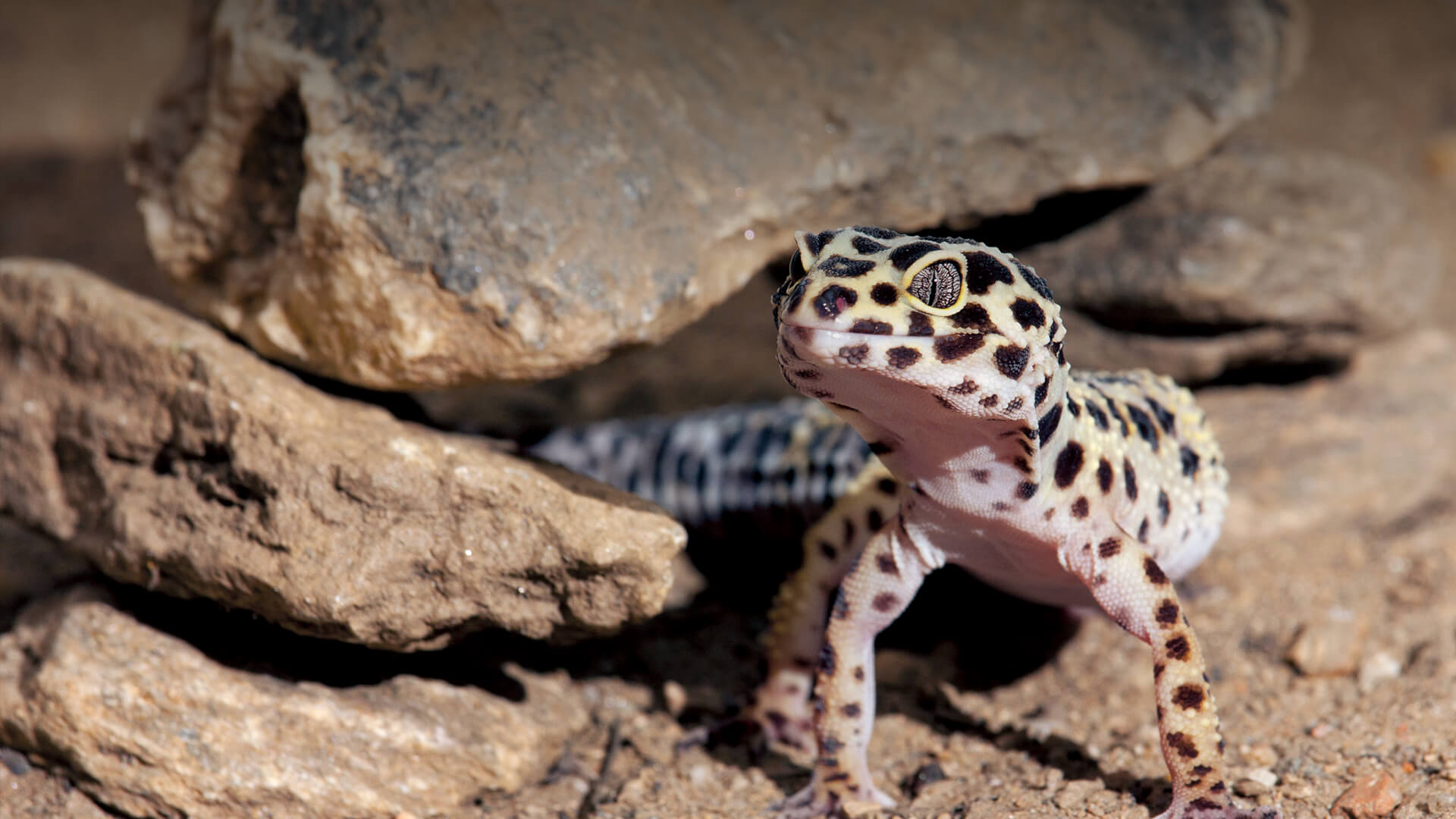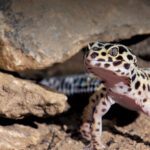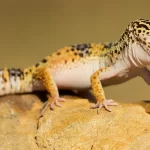Leopard geckos (Eublepharis macularius) are a popular pet lizard native to the deserts of Asia. Their natural habitats span parts of Afghanistan, Pakistan, northwest India, and some areas of Iran. As their name suggests, leopard geckos have spotty skin with yellow and white bands and spots over a light brown or grey background. These markings help them blend into their rocky surroundings and avoid predators. Their natural habitats are dry, arid areas with little vegetation. In this article we talk about Natural distribution and habitat of Leopard geckos.
Table of Contents
Arid Desert Climate
Leopard geckos come from regions with extreme desert climates characterized by very hot days and cold nights. Their native habitats see average summer high temperatures over 100°F. Winter lows often drop below freezing at night. The vegetation is sparse in these barren, sandy environments. Leopard geckos shelter in burrows and crevices during the day to avoid the heat. They emerge at dusk when temperatures cool to more comfortable levels. Their nocturnal nature helps them avoid predators and regulation of their body temperature.
Rocky, Dry Terrain
Leopard geckos occupy rocky deserts and dry grasslands across their range. They are found in areas scattered with boulders, loose stones, and outcroppings that provide ample crevices and cracks to hide and nest in. The rocks retain heat from the sun, preventing the temperature from dropping too low at night inside their shelters. The minimal vegetation includes grasses, small desert shrubs, and succulents that can store water. Without much plant cover, leopard geckos rely on their cryptic coloration and patterns to camouflage themselves against the rocks and sand to avoid predators like birds, foxes, and snakes.
Native Locations and Habitats
Leopard geckos have a wide natural distribution across desert regions in Asia. Their habitats vary somewhat across their range but share the common climate and terrain features of hot, arid deserts with rocky outcrops. Let’s look at some of the specific areas wild leopard geckos call home.
Northwest India
In India, leopard geckos occupy the Thar Desert spanning across northwestern states like Rajasthan and Gujarat. This is an extremely hot, sandy region with scattered oasis-like areas. Temperatures frequently exceed 115°F in summer. Rocky outcroppings emerge like islands among seas of sand dunes. Leopard geckos find shelter among these outcroppings and the ruins of old structures.
Pakistan
Leopard geckos range across eastern and western Pakistan. In eastern Pakistan, parts of the Thar Desert extend across the border from India. Rocky hills also characterize areas of leopard gecko habitat in Pakistan’s Balochistan and Punjab provinces. Pakistan’s dry deserts and semi-arid grasslands provide the hot, dry conditions leopard geckos thrive in.
Afghanistan
In Afghanistan, leopard geckos occupy deserts and rocky areas including those scattered with caves. Their habitat spans from near the northeastern border with Pakistan west to Iran and south to the Pakistan border. The desert basins and uplands dotted with outcroppings of the central highlands provide prime habitat. Temperatures are extremely hot, exceeding 118°F in summer across these arid lowlands and valleys.
Iran
The southeastern corner of Iran marks the northwestern extent of the leopard gecko’s native range. They live in the arid areas of Iran’s Kerman and Sistan and Baluchestan provinces, which get fewer than eight inches of rain annually. Summers bring temperatures over 115°F, while winters see average lows below freezing. Leopard geckos find refuge from the extreme heat and cold among rocky plateaus, desert basins, and caves.
Captive Care Considerations
Leopard geckos’ native desert habitats help guide captive care. Replicating parts of their environment makes them feel more secure. This includes providing a hot basking area over 90°F at one end and a cooler area under 80°F at the other for thermoregulation. Hiding places like artificial rock crevices, caves, and foliage are essential along with an appropriate substrate. Though native to deserts, humidity should not drop too low for captive geckos. Light misting and a humid hide help prevent problematic shedding. Paying attention to a leopard gecko’s native climate and habitat needs results in healthy, thriving pets.
Threats in the Wild
Leopard gecko populations are currently stable across most of their habitat range, and they are classified as Least Concern by the IUCN Red List. As humans encroach for agriculture and development, their barren wild habitats shrink. Collection for the pet trade also poses a threat. Afghanistan and Pakistan have placed controls on collecting and exporting wildlife but have had trouble enforcing them in recent decades due to conflict. Habitat conservation helps ensure wild populations remain secure. Having a hearty appetite for insects also contributes to their success even in marginal desert environments.
Popular Captive Pets
The leopard gecko has become one of the most common pet lizards due to their small size, relatively easy care, and docile temperaments. Their striking appearance and variety of morphs appeal to reptile enthusiasts. Leopard geckos only reach 7-10 inches as adults, so they do not require expansive enclosures. The adequate size and low cost make them attractive beginner pets. Captive breeding has produced a wide array of colors and patterns beyond the wild type. Their growing popularity in the reptile trade means most captive leopard geckos today never see their species’ harsh, remote desert homes. Careful husbandry can help pet geckos thrive and live up to 20 years.
Leopard Geckos’ Wild Origins
Leopard geckos hail from some of Asia’s harshest desert environments where they have adapted to the extremes of heat, cold, and scarcity of water. As pets, we modify their care to support good health in captivity. But understanding their origins provides insight into their behavior, needs, and natural beauty. Providing proper heating, shelters, substrate, and humidity helps replicate key aspects of their native habitats. With good care, the popular leopard gecko makes an excellent pet while their wild relatives continue thriving across the arid Asian deserts they call home. I sincerely hope you find this “Natural distribution and habitat of Leopard geckos” article helpful.





